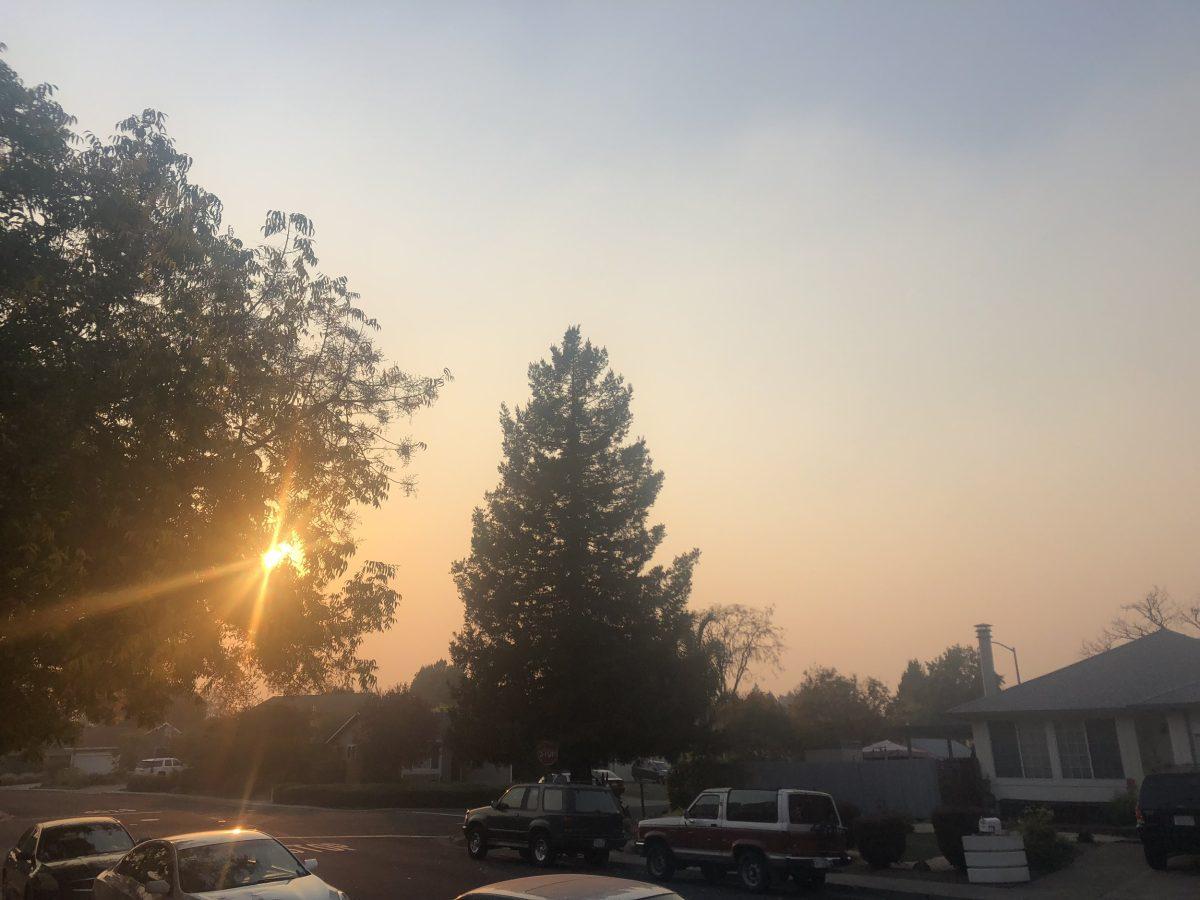After suspending classes at the end of last week due to poor air quality, Sonoma State resumed classes on Nov. 13.
On Nov. 8, Sonoma State suspended classes at 4 p.m. because “the air quality at Sonoma State has continued to worsen due to the fires in Butte County and has now reached unhealthy levels.” The university cited a 168 figure on the Air Quality Index (AQI). An AQI from 151-200 is considered “unhealthy.”
On Nov. 9, the AQI reached a peak of 294, approaching the “hazardous” level.
The university anticipated this increase in danger when they originally suspended classes, and campus remained closed through the three day weekend.
The air quality worsened again on Nov. 12 night, to a level of 198, causing many schools to cancel classes. At 12 p.m. on Tuesday, the AQI was at a 167, getting better as the day went on.
“Our air quality has improved since last week when the conditions were much worse,” Sonoma State said in a campus-wide update Tuesday. The positive trend in the air quality was the main reasoning behind the decision to reopen. University officials are taking it day by day.
The university’s statement touted its high-efficiency HVAC air filtration systems, which ensure Sonoma State’s buildings have “some of the best air in Sonoma County,”, according to associate vice president for strategic communications Paul Gullixson.
Other schools in the area opted to close on Tuesday, including Tech High, the high school located on Sonoma State’s campus, and Santa Rosa Junior College.
The decision to resume classes caused concern from some students.
“Please make the decision for your own health whether you can come to school or not,” Associated Students president Carley Chatterly said.
Jason Gorelick, the former Associated Students vice president, called the decision to open campus “reckless and irresponsible.” He said, “Many students have to walk or bike to campus, so this decision is affecting low income students more heavily as well.”
Morgan Baldwin, a transfer student, said, “Given that most schools in Sonoma County are closed due to poor air quality and we’re one of the few open makes me worried about certain students with bad asthma, and they have to make it to school with the air quality not being healthy to breathe in.”
The university offered respirator masks to students at the front desk of the student center.
Diana Palaflox, the student employee distributing masks at the front desk of the student center on Thursday, said the demand for masks was high. She had given out over 200 masks in the first hour of her shift.
When they were originally distributed, students were allowed to take as many masks as they’d like, but now there is a posted limit of one per person.
Sonoma State activated NomaCares, a “one-stop shop for students and other Sonoma State community members who have lost family homes or been evacuated from family homes as a result of the fires in Butte County or in the greater Los Angeles area.”
They encouraged students who feel like the can’t attend class to contact NomaCares, which can be reached at (707) 664-2730 or [email protected].





![[Both photos courtesy of sonoma.edu]
Ming-Ting Mike Lee stepped in as the new SSU president following Sakakis resignation in July 2022](https://sonomastatestar.com/wp-content/uploads/2024/04/CC4520AB-22A7-41B2-9F6F-2A2D5F76A28C-1200x1200.jpeg)


























